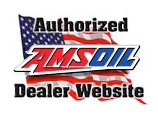29 Jan Solving the Challenges of Flat-Tappet Cams in Classic Car Engines
Summer belongs to classic cars and hot rods. It’s the season when thousands visit car shows across North America and loyalists of every make and model cruise the streets to show off their rides. One of the big concerns among classic car owners in recent years has been the abundance of flat-tappet failures that many attribute to the reduction of zinc and phosphorus in today’s oil formulations.
Zinc dialkyldithiophosphate (ZDDP) is the most common zinc-based additive, and is used primarily as an anti-wear agent to prevent premature engine wear. It also provides corrosion and oxidation protection. However, because the zinc and phosphorus found in ZDDP can negatively affect catalytic converters, it has been phased out of motor oil formulations in recent years.
Reducing ZDDP content has drawbacks, as classic car owners have found. Older vehicles with flat tappet camshafts and engines that include high-tension valve springs or other modifications that create high-contact pressures can suffer premature wear due to reduced ZDDP levels.
Flat-Tappet vs. Roller Cams
The design of flat-tappet cams makes them especially vulnerable to wear. As the name indicates, the tappet–or lifter–is flat. During operation, the surface of the cam lobe slides rapidly over the surface of the tappet, producing high friction and temperatures. A thin oil film is the only barrier that prevents the lifter and cam lobe from welding together. If the oil film fails or provides insufficient wear protection, the two components can eventually wear the flat-tappet cam and affect valve operation. Engine power and efficiency can decline if the flat-tappet cam cannot lift the valves enough to adequately charge the chamber for ignition or release exhaust fumes.
Most V-8 engines of the muscle car era came standard with the flat-tappet cams; the problem is especially prevalent to classic-car and hot-rod owners.
Roller cams are differentiated by rolling contact rather than sliding contact. Although more costly, roller cams are common in most modern vehicles and be retrofitted into classic-car and hot-rod engines.
Demand for High-Zinc Oils
The abundance of flat-tappet camshafts failures in classic car and hot rod circles has spurred the market for high-zinc motor oils formulated especially to protect flat-tappet cams. AMSOIL Z-ROD® Synthetic Motor Oil (ZRT, ZRF) is specially engineered for these classic and high-performance vehicles. It features a high-zinc formulation to help prevent wear on flat-tappet cams and other critical engine components. Many of these vehicles sit idle much of the time, Z-ROD contains a proprietary blend of rust and corrosion inhibitors for added protection during long-term storage. Z-ROD Synthetic Motor Oil is designed to perform on the street and protect during storage
Complete Vehicle Protection
Classic cars and hot rods need more than just premium engine protection. power and torque, placing added stress on the transmission, differential and chassis. AMSOIL Synthetic Manual Transmission & Transaxle Gear Lube (MTG), Severe Gear® ® Synthetic Racing Grease (GRG) offer advanced protection and hot rods need.




